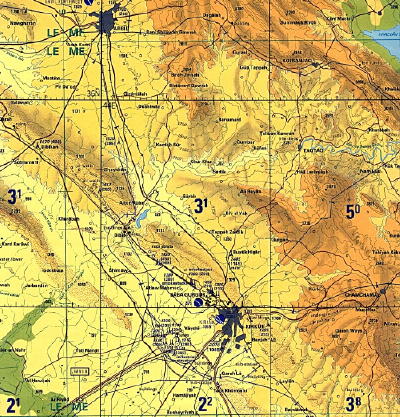Aircraft Hangar
Aircraft Hangar
Almost as soon as they were invented, planes were drafted for military service. The first country to use planes for military purposes was Bulgaria, whose planes attacked and reconnoitered the Ottoman positions during the First Balkan War 1912-13. The first war to see major use of planes in offensive, defensive and reconnaissance capabilities was World War I. The Allies and Central Powers both used planes extensively. The most famous plane of the war is the Sopwith Camel; it was credited with more aerial victories than any other Allied plane, but was also notorious for its awkward handling resulting in the death of many pilots.
While the concept of using the airplane as a weapon of war was generally laughed at before World War I, the idea of using it for photography was one that was not lost on any of the major forces. All of the major forces in Europe had light aircraft, typically derived from pre-war sporting designs, attached to their reconnaissance departments. While early efforts were hampered by the light loads carried, improved two-seat designs soon appeared that were entirely practical.
It was not long before aircraft were shooting at each other, but the lack of any sort of steady point for the gun was a problem. The French solved this problem when, in late 1914, Roland Garros attached a fixed machine gun to the front of his plane, but it was Adolphe Pegoud who would become known as the first "ace", getting credit for five victories, before also becoming the first ace to die in action.
Aviators were styled as modern day knights, doing individual combat with their enemies. Several pilots became famous for their air to air combats, the most well-known is Manfred von Richthofen, better known as the Red Baron, who shot down 80 planes in air to air combat with several different planes, the most celebrated of which was the Fokker Dr.I. On the allied side, Rene Paul Fonck is credited with the most victories at 80. For the Americans, the most successful ace was Eddie Rickenbacker with 26 victories.
World War II saw a drastic increase in the pace of aircraft development and production. All countries involved in the war stepped up development and production of aircraft and flight based weapon delivery systems, such as the first long range bomber. The P-51 Mustang was critical to the success of the heavy bomber, allowing much lower losses than otherwise.
World War II saw a number of technological advances that were remarkable for its day: first functional jet plane which was the Heinkel He 178 (Germany), flown by Erich Warsitz in 1939. An earlier prototype was the Coanda-1910 that did a short flight in December 16, 1910. The first cruise missile (V-1), and the first ballistic missile (V-2) were also developed by Germany. However, Jet fighters did not have significant impact, nor cruise and ballistic missiles in part because the V-1 was not very effective and the V-2 was never produced in useful numbers.
Even with the end of World War II, there was still a need for advancement in aircraft and rocket technology. Not long after the war ended, in October of 1947, Chuck Yeager took the rocket powered Bell X-1 past the speed of sound. Although anecdotal evidence exists that some fighter pilots may have done so while dive-bombing ground targets during the war, this is the first controlled, level flight to cross the sound barrier. Further barriers of distance were eliminated in 1948 and 1952 as the first jet crossing of the Atlantic occurred and the first nonstop flight to Australia occurred.
During the 1950s, a new age of military aviation history would be written. When the Soviet Union developed long-range bombers that could deliver nuclear weapons to North America and Europe, Western countries responded with interceptor aircraft that could engage and destroy the bombers before they reached their destination. The "minister-of-everything" C.D. Howe in the Canadian government, was the key proponent of the Avro Arrow, designed as a high-speed interceptor, reputedly the fastest aircraft in its time. However, by 1955, most Western countries agreed that the interceptor age was replaced by the guided missile age. Consequently, the Avro Arrow project was eventually cancelled in 1959 under Prime Minister John Diefenbaker.
In the beginning of the 21st century, subsonic aviation focused on eliminating the pilot in favor of remotely operated or completely autonomous vehicles. Several Unmanned Aerial Vehicles or UAVs have been developed. In April 2001, the unmanned aircraft Global Hawk flew from Edwards AFB in the US to Australia non-stop and unrefuelled. This is the longest point-to-point flight ever undertaken by an unmanned aircraft, and took 23 hours and 23 minutes. In October 2003, the first totally autonomous flight across the Atlantic by a computer-controlled model aircraft occurred. (Courtesy: Wikipedia)
|







